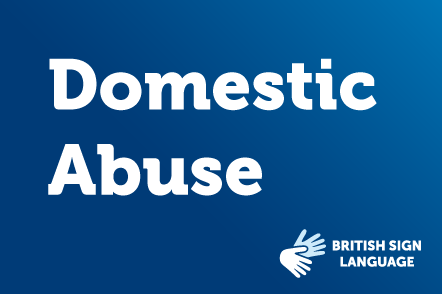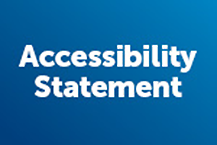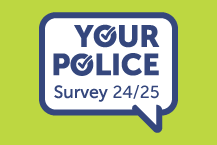Vehicle recovery scheme
This page contains information on recovering:
Removed vehicles
Here, you'll find information on what to do if your vehicle was removed by the police because it was:
- stolen, and found by us
- involved in a collision and is causing an obstruction or danger
- parked illegally
- involved in a crime
- driven in an anti-social manner
- abandoned, causing an obstruction or danger
- abandoned after an incident involving the police
If your vehicle was seized on suspicion of being driven without a driving licence or valid insurance, by you or someone else, go here to find the right information.
How to reclaim your vehicle
If your vehicle has been removed and is being kept at one of our Vehicle Recovery Operators premises, if you are aware of its location you can arrange collection of your vehicle immediately.
Otherwise you will receive a statutory notice letter. This letter will contain detailed instructions and let you know at which Vehicle Recovery Operator premises your vehicle is being kept.
To reclaim your vehicle you'll need to go to the correct Vehicle Recovery Operators premises to prove your identity and your ownership of the vehicle and pay any statutory charges.
What you must bring with you
1. Proof of identity – valid photo ID.
This means either:
- passport
- driving licence
- EU national identity card
- immigration document
- Freedom Pass
We won't accept a student or employer’s ID.
2. Proof of ownership.
This means either:
- the full vehicle registration document (V5C) in your name together with proof of address to match the registered address, or
- an unaltered and new keeper supplement (V5C/2) together with a ‘verifiable’ bill of sale and proof of name and address to match the new keeper supplement.
3. Driving licence.
If you don’t have a valid driving licence you can’t drive the vehicle on the road. You'll have to remove it from the Vehicle Recovery Operators premises on a recovery truck at your own expense. Your driving licence must be either:
- a UK driving licence
- an EU/EEA photo card driving licence
- a non-EU/EEA driving licence together with an International Driving Permit or an official translation
4. MOT
Unless the vehicle is being removed from the Vehicle Recovery Operators premises on a recovery truck it will need either:
- a valid MOT (depending on the age of the vehicle), or
- a pre-booked MOT appointment
5. Insurance certificate
If you don't have a valid insurance policy you can't drive the vehicle on the road. You'll have to remove it from the Vehicle Recovery Operators premises on a recovery truck at your own expense.
If someone is reclaiming the vehicle on your behalf
If the legal owner of the vehicle can't go to the Vehicle Recovery Operator premises in person then someone else can collect it on their behalf.
The person collecting the vehicle on your behalf must bring with them the documents listed above and also:
- an authority letter – a letter signed by you giving the person the authority to collect on your behalf
- a copy of your passport or driving licence – so we can verify the signature on the letter of authority
- valid certificate of motor insurance that allows them to reclaim the removed vehicle from a vehicle recovery operators premises
Collecting property from a removed vehicle
If the police remove your vehicle, this includes any load within or on the vehicle, they are entitled to recover the statutory fees. If you do not reclaim your vehicle, you may lose your claim to any load/items you had in it. The only items from the vehicle that you can always have back, without payment are:
• Medicines and medical equipment – (Medicine must be in the original packaging and prescribed to you)
• Cash, credit cards, cheque books, pension or benefit books
• Keys, such as house or shop keys
• Immediately required outer clothing such as a raincoat or jumper
• High value items and large amounts of cash which you may have had in your vehicle, are not included and you will be required to provide proof of ownership.
You will not be able to reclaim any items that are part of the vehicle such as radios, speakers and alloy wheels.
If you want to get property from the removed vehicle, but not the vehicle itself, you need to bring proof that you're the vehicle's owner or registered keeper (a V5C or new keeper supplement V5C/2).
Someone else can collect on your behalf. They need to bring:
1. a letter of authority, signed by you, giving them permission to collect property from the vehicle
2. a copy of your passport or driving licence so we can verify the letter is signed by you
Please note, if the vehicle is badly damaged it might not be possible to get into it to remove property.
If your vehicle has been issued with a PG9 prohibition notice, isn't roadworthy or won’t start
If your vehicle has been issued with a PG9 prohibition notice, isn’t roadworthy or won’t start, you need to arrange for a fully trained, equipped and insured vehicle recovery operator to collect it at your own expense.
We don’t allow vehicles to be repaired while they’re at the Vehicle Recovery Operators premises (this includes changing tyres, repairing windscreens or jump starting).
Recovery operators
If you're a recovery operator collecting a vehicle from the Vehicle Recovery Operators premises you must:
- bring a letter of authority from the owner or keeper, as explained above (If someone is reclaiming the vehicle on your behalf), if they don't come to the Vehicle Recovery Operators premises with you
Things to be aware of
Bring a set of keys, in case the driver didn't leave the keys in the vehicle.
If the vehicle was in a collision and you’re not sure it’s roadworthy, consider having it recovered by a professional recovery operator.
We highly recommend taking your vehicle to a garage for a safety check if you’re getting it back after it’s been stolen.
The police, or Vehicle Recovery Operator staff, can't advise on whether your vehicle is roadworthy.
If your vehicle doesn’t have correct number plates and you’re planning on driving it, you must bring valid replacement plates when you collect it.
Provisional driving licence holders
If you’re driving under a provisional licence you must bring someone who:
- is over 21 and
- has held a licence for more than three years
Make sure you have L plates on the vehicle.
Payment of charges
Statutory charges apply to most vehicles removed to a Vehicle Recovery Operators premises, depending upon the reason for removal.
These charges are set by Government, not the police, and vary depending on the weight and condition of the vehicle.
The Removal, Storage and Disposal of Vehicles (Prescribed Sums and Charges etc.) (Scotland) Regulations 2019 – here.
The Police (Retention and Disposal of Motor Vehicles) (Scotland) Amendment Regulations 2019– here.
The Civic Government (Scotland) Act 1982
In most cases where the vehicle is not badly damaged or off the road, the charges will be:
- two-wheeled vehicles: £190 removal charge and £13 per day storage
- cars and light vans: £190 removal charge and £25 per day storage
Please note, the daily storage charges start from midday the day after the vehicle was removed.
Vehicle recovery operators can’t accept payment over the phone; the cardholder must come to the vehicle recovery operators premises.
Vehicle recovery operators don’t accept cheques or American Express card payments.
Vehicle recovery operators do accept:
- Cash (British currency only)
- Debit card
- Credit Card
Seized Vehicles
Here, you can find out how to reclaim a vehicle that has been seized under Section 165A of the Road Traffic Act 1988. This means an officer had reasonable grounds to believe that the driver was uninsured or was not driving in accordance with their driving licence.
If your vehicle has been seized for this reason the driver should have received a seizure notice.
If your vehicle has been removed for another reason, go here.
How to reclaim your vehicle
You are legally required to go to a police station within fourteen days of the date on the seizure notice or notice letter to reclaim your vehicle.
To reclaim your vehicle you must bring the correct documents (which are listed below).
The correct documents you need to reclaim your vehicle
1. Proof of identity – valid photo ID, such as:
- passport
- driving licence
- EU national identity card
- immigration document
- Freedom Pass
We won't accept a student or employer’s ID.
2. Valid driving licence
Your driving licence must be either:
- a UK photo card driving licence; if you have the old paper licence you need to bring your passport or another verifiable form of photo ID (one from the list above
- an EU/EEA photo card driving licence along with a passport or EU/EAA identity card
- a non-EU/EEA driving licence together with an International Driving Permit or an official translation, plus a passport or other evidence of immigration status and date of arrival in the UK
3. Valid certificate of motor insurance
You'll need to produce a valid certificate of motor insurance that permits the release of a vehicle seized by a Government Authority before your vehicle will be released, even if you don’t intend to drive it on a public road.
We’ll accept:
- electronic copies of the certificate on your mobile device
- copies sent by fax or email, if they've come directly from your insurer
Please make sure you've declared all the relevant facts to your insurer, including:
- correct registered keeper details
- any motoring convictions in the last five years
- any claimable incidents within the last five years, whether a claim was made or not
- any relevant medical conditions or disability
- correct address
- correct date of birth
- correct occupation
If you took out the policy after the vehicle was seized then you must also declare relevant pending convictions.
It's a serious criminal offence to fail to declare the correct material facts or to give false information when getting insurance. This can render your insurance invalid.
We may share information with your insurer or the Motor Insurers' Bureau if we suspect an offence.
Short-term insurance or temporary cover (for a period of up to 30 days) may not be valid to reclaim a seized vehicle. Please check the wording on the certificate or cover note. If in doubt, contact your insurer before you come to the police station.
If we're not satisfied that your insurance is valid for the release of a seized vehicle, we may ask you to provide written confirmation from your insurer.
A motor trader can't release a seized vehicle on your behalf. A motor trade policy will only permit the release of a vehicle that was:
- the property of the motor trader
- in their custody and control at the time of seizure
4. Proof of ownership
- the full vehicle registration document (V5C) in your name together with proof of address to match the registered address, or
- an unaltered and new keeper supplement (V5C/2) together with a ‘verifiable’ bill of sale and proof of name and address to match the new keeper supplement
5. MOT
If your vehicle is over three years old and doesn't have a current MOT test pass certificate, you must:
- bring evidence from a garage of a pre-booked MOT appointment, or
- arrange recovery at your own expense
6. Vehicle excise duty (tax)
The current registered keeper is responsible for taxing a vehicle. The road tax is not transferred when the vehicle is sold to a new keeper.
If the vehicle's excise duty has expired, the vehicle may be seized again by DVLA if it's driven or parked on a public road.
If someone is reclaiming the vehicle on your behalf
As the registered keeper or owner of a seized vehicle you are legally responsible for it and you must attend the police station in person to prove ownership and pay the charges to the relevant Vehicle Recovery Operator.
This legal requirement will only be waived if you can provide evidence that:
- you're out of the country (for example, a copy of flight tickets)
- you're in custody
- you're in hospital
- you're immobile due to age, injury or disability
- there are compelling medical or compassionate circumstances that stop you being able to attend the police station in person
If any of the above circumstances apply to you, the third party collecting the vehicle on your behalf must attend the police station with:
- the evidence of the valid reason why you can't attend in person
- a letter of authority – a letter signed by you authorising the third party to collect the vehicle on your behalf
- a copy of your passport or driving licence as proof of your identity and signature
- a valid driving licence and a valid certificate of motor insurance that allows them to reclaim the seized vehicle from a Vehicle Recovery Operators premises
If you can't drive the vehicle yourself
If you can attend the police station in person to establish your ownership but you can't drive the vehicle yourself, you may nominate someone to collect it on your behalf.
The third party must pay the charges and have:
- an authority letter – a letter signed by you giving the person the authority to collect on your behalf
- a copy of your passport or driving licence – so we can verify the signature on the letter of authority
Valid motor insurance for third party collection
The nominated driver should normally be named as an additional driver on the registered keeper's own motor insurance policy. Please contact your insurer before coming to the police station if you're in any doubt. If there’s any doubt about the validity of the insurance, the police staff may ask you to get confirmation from your insurer that the relevant material facts have been declared.
If you’ve insured the vehicle yourself but you don’t hold a valid driving licence or you’re not fit to drive, your insurance policy may not be valid.
If the nominated driver insures the vehicle but they haven’t informed the insurer that they’re not the owner or registered keeper, their insurance policy may not be valid.
The legal requirement for the seized vehicle to have valid motor insurance before it leaves the vehicle recovery operator’s premises applies in all cases, even if a recovery operator is collecting the vehicle from the Vehicle Recovery Operator on your behalf.
Payment of charges
You can find full details about the statutory charges in the Road Traffic Act (Retention and Disposal of Seized Motor Vehicles) Regulations 2005 – amended 2008 – here.
These charges are set by Government, not the police, and vary depending on the weight and condition of the vehicle.
In most cases where the vehicle is not badly damaged or off the road, the charges will be:
- two-wheeled vehicles: £190 removal charge and £13 per day storage
- cars and light vans: £192 removal charge and £26 per day storage
Please note, the daily storage charges start from midday the day after the vehicle was seized. Vehicle recovery operators can’t accept payment over the phone; the cardholder must come to the vehicle recovery operators premises.
Vehicle recovery operators don’t accept cheques.
Vehicle recovery operators do accept:
- cash (British currency only)
- Debit card
- Credit Card
Collecting property from a seized vehicle
If the police seize your vehicle, this includes any load within or on the vehicle, they are entitled to recover the statutory fees. If you do not reclaim your vehicle, you may lose your claim to any load/items you had in it. The only items from the vehicle that you can always have back, without payment are:
• Medicines and medical equipment – (Medicine must be in the original packaging and prescribed to you)
• Cash, credit cards, cheque books, pension or benefit books
• Keys, such as house or shop keys
• Immediately required outer clothing such as a raincoat or jumper
• High value items and large amounts of cash which you may have had in your vehicle, are not included and you will be required to provide proof of ownership.
You will not be able to reclaim any items that are part of the vehicle such as radios, speakers and alloy wheels.
If you want to get property from the seized vehicle, you need to bring proof that you're the vehicle's owner or registered keeper (a V5C or new keeper supplement V5C/2).
Someone else can collect on your behalf. They need to bring:
1. a letter of authority, signed by you, giving them permission to collect property from the vehicle
2. a copy of your passport or driving licence so we can verify the letter is signed by you
Please note, if the vehicle is badly damaged it might not be possible to get into it to remove property.
If your vehicle has been issued with a PG9 prohibition notice, isn't roadworthy or won’t start
If your vehicle has been issued with a PG9 prohibition notice, isn’t roadworthy or won’t start, you need to arrange for a fully trained, equipped and insured vehicle recovery operator to collect it at your own expense.
We don’t allow vehicles to be repaired while they’re at the Vehicle Recovery Operators premises (this includes changing tyres or repairing windscreens).
Recovery operators
If you're a recovery operator collecting a vehicle from the Vehicle Recovery Operators premises you must:
- bring a letter of authority from the owner or keeper, as explained above, if they don't come to the Vehicle Recovery Operators premises with you.
Things to be aware of
Bring a set of keys, in case the driver didn't leave the keys in the vehicle.
If the vehicle was in a collision and you’re not sure it’s roadworthy, consider having it recovered by a professional recovery operator.
We highly recommend taking your vehicle to a garage for a safety check if you’re getting it back after it’s been stolen.
The police, or Vehicle Recovery Operators staff, can't advise on whether your vehicle is roadworthy.
If your vehicle doesn’t have correct number plates and you’re planning on driving it, you must attach valid replacement plates when you collect it.
Provisional driving licence holders
If you’re driving under a provisional licence you must bring someone who:
- is over 21, and
- has held a licence for more than three years
Make sure you have L plates on the vehicle.
Further information
The instructions in a seizure notice, given to the driver when the vehicle is seized, contain further information as shown below.

Read 'Instructions on seizure notice' (available here).
The Vehicle Recovery Operators staff will also send the registered keeper a notice letter with the details of what's happened to their vehicle.






